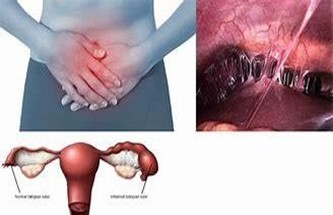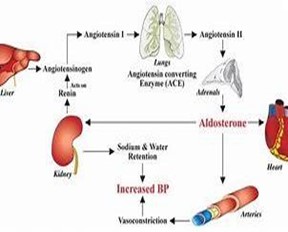A female patient's chart indicates the following signs and symptoms, fever, foul-smelling vaginal discharge and sudden pelvic pain Which condition is indicated by this patient's chart?
Pelvic inflammatory disease (PID)
Ovarian cyst
Endometriosis
Uterine leiomyomas
The Correct Answer is A
Pelvic inflammatory disease (PID) is an infection of the female reproductive organs, such as the uterus, fallopian tubes, and ovaries. It is usually caused by sexually transmitted bacteria that ascend from the vagina or cervix to the upper genital tract. PID can cause fever, foul-smelling vaginal discharge, and sudden pelvic pain that may worsen during sexual intercourse or menstruation. PID can also lead to infertility, ectopic pregnancy, or chronic pelvic pain if left untreated.

Nursing Test Bank
Naxlex Comprehensive Predictor Exams
Related Questions
Correct Answer is C
Explanation
The renin-angiotensin system (RAS) is a hormonal system that regulates blood pressure and fluid balance. When blood pressure is low, the kidneys secrete renin, which converts angiotensinogen into angiotensin I, which is then converted into angiotensin II by angiotensin-converting enzyme (ACE). Angiotensin II is a potent vasoconstrictor that narrows blood vessels and increases blood pressure. It also stimulates the release of aldosterone, which increases sodium and water retention and further raises blood pressure. When the RAS is overactivated, it can lead to a hypertensive crisis, which is a severe elevation of blood pressure that can damage organs and cause stroke, heart attack, or kidney failure.

Correct Answer is C
Explanation
Lymphangitis is an inflammation of the lymphatic vessels that occurs when bacteria or other pathogens spread from a site of infection to the lymphatic system. It can cause swollen lymph nodes, fever, chills, muscle aches, and loss of appetite, as well as pain in the affected area, which may be accompanied by red streaks along the course of the inflamed vessels.
Whether you are a student looking to ace your exams or a practicing nurse seeking to enhance your expertise , our nursing education contents will empower you with the confidence and competence to make a difference in the lives of patients and become a respected leader in the healthcare field.
Visit Naxlex, invest in your future and unlock endless possibilities with our unparalleled nursing education contents today
Report Wrong Answer on the Current Question
Do you disagree with the answer? If yes, what is your expected answer? Explain.
Kindly be descriptive with the issue you are facing.
